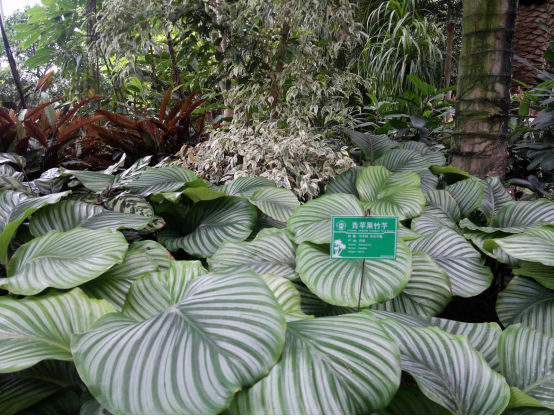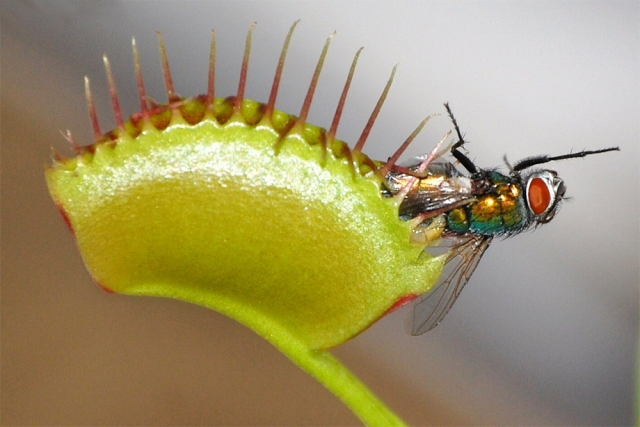Matters needing attention in the culture of moth, butterfly and flower
Pruning
Moth butterfly flower in the process of its growth, should be often pruned, in order to maintain the beauty of the plant. When the plant is transplanted into the pot, it is necessary to pick the heart of the plant once, so that it can separate more new branches, and then, in order to maintain the ornamental nature of the plant, the plant can be pruned many times. After the flowers of the moth butterfly fade, you can also cut off the withered flowers. In this way, it can also send new branches and then blossom.

The moth butterfly flower is a very beautiful flower. We should be more careful when raising it. Soon we can see the beautiful flower of the moth butterfly flower.
Culture methods and matters needing attention of moth butterfly flower
Latin name Schizanthus pinnatus
Also known as moth butterfly grass, butterfly grass, Pingmin orchid
The plant kingdom.
Phylum angiosperm
Dicotyledonous class
Solaniformes
Family Solanaceae
Moths, butterflies and flowers.
An annual or perennial herb native to Chile (Chile) and having eight varieties. This plant can grow up to 3 feet (90 centimeters) tall. Their leaves are dark green and covered with short, sticky hairs. Large funnel-shaped flowers are purple, blue, red, yellow or white with golden veins.
1. Morphological characteristics.
Biennial herbs, plant height 60-120cm, sparsely slightly sticky glandular hairs. Simple leaves alternate, 1-2-pinnatisect, lobes entire or coarsely toothed. Inflorescences terminal, flowers numerous, ca. 3cm in diameter, calyx tube-shaped, 5-parted, Corolla tube shorter than calyx, Corolla lip-shaped, upper lip light, middle lobe with a yellow spot extending to the stem, and violet spots on the lower lip, shades of light and varied flowers.
2. Growth environment
Like light, like cool environment, require good drainage and fertile soil, cold resistance is not strong.
3. Distribution
Originally from Chile. It is distributed in Japan, Korea and South China, Southwest China and Taiwan, and is cultivated in greenhouses.
Morphological characteristics and habits of moth butterfly flower culture and reproduction methods of moth butterfly flower
The moth butterfly is a biennial herb native to Chile (Chile) with eight varieties. This plant can grow up to 3 feet (90 centimeters) tall.
The leaves of the moth butterfly flower are dark green and covered with short, sticky hairs. Large funnel-shaped flowers are purple, blue, red, yellow or white with golden veins.
The flowering period of moth and butterfly is from April to June.
Morphological characteristics of moth butterfly flower
Plutella xylostella is a biennial herb with a height of 60-120cm and sparsely slightly sticky glandular hairs. Simple leaves alternate, 1-2-pinnatisect, lobes entire or coarsely toothed. Inflorescences terminal, flowers numerous, ca. 3cm in diameter, calyx tube-shaped, 5-parted, Corolla tube shorter than calyx, Corolla lip-shaped, upper lip light, middle lobe with a yellow spot extending to the stem, and violet spots on the lower lip, shades of light and varied flowers.
The flowering period of moth and butterfly is from April to June.
Ecological habits of moth, butterfly and flower
Moths and butterflies like light and cool environment, which requires that the soil is well drained and fertile and the cold tolerance is not strong.
Culture methods of moth, butterfly and flower
The moth butterfly flower is planted indoors from August to September, and the seeds are small and do not need to be covered with soil.
Raising seedlings
1. Sowing time: sowing from late August to early October
2. Seedbed: reference melon leaf chrysanthemum
3. Sowing rate: about 1600 seeds per gram, sowing 2 grams per square meter, about 2000 seedlings can be bred.
4. Seed cover depth: 3-4mm. 7Mel emerged 10 days after sowing.
5. Pay attention to raising seedlings:
(1) the seed is larger and the soil cover should be slightly deeper than that of Chrysanthemum morifolium.
(2) the seedbed should be fully watered before or after sowing. Watering after sowing should be sprayed with fine mist or through sunshade net
(3) keep the humidity of the seedling bed before emergence.
(4) for moisturizing and cooling before emergence, a net can be covered above the seedling bed for shading, but full light management must be carried out after emergence.
(5) the seedlings are easy to grow (mainly the Hypocotyl is easy to elongate). Therefore, after emergence, the net should be opened in time, the sowing density should not be too large, appropriate early seedlings; the early stage of seedlings should be properly controlled, and the seedlings should be divided in time. It can also be controlled by 120 ppm 15% paclobutrazol (8 g / 10 kg water).
Split seedling
Seedlings with 3-4 true leaves. Although the root system of the moth butterfly flower is more developed and the seedling can be planted on the ground, it is easy to hurt the root when digging up the seedling; if the seedling is too dense, the soil quality of the seedling bed is not good, the seedling is too late or the operation is improper during transportation, or the slow seedling stage after potting is improperly managed in light and water, serious plant injury may still occur after potting, resulting in rigid seedlings and affecting the later emergence and flowering. Therefore, it is recommended to use the nutrition bowl of 10X8cm specification to divide the seedlings. The seedling soil is compost soil at 4:1: rotten sawdust. The depth of seedling planting is slightly exposed cotyledon nodes. Thin and weak seedlings and tall seedlings should be removed when dividing seedlings. After seedling division, shading net was used to shade for 4-5 days, cover early and uncover late, and all-light management after slow seedling. The seedling stage is fertilized 3-4 times; the fertilizer is 45% high concentration compound fertilizer or urea with a concentration of 1 ‰, or cake fertilizer and water diluted about 15 times.
Upper basin
6-7 leaves on the basin, such as pulling the bowl once (two rows of bowls are pulled out and put separately), it can be postponed to 8-9 leaves on the basin, with a diameter of 14-16cm. The basin soil is compost soil: rotten sawdust = 3:1, plus compound fertilizer 1.5kg/ cubic meter. The depth of the upper basin is to skip the original soil tub (cotyledon node embedded in 0.5cm).
Watering and fertilization
Watering after the basin should grasp the principle of "dry and wet", that is, there must be a process of drying the basin soil between the two watering. The degree of drying is based on the slight wilting of the leaves. The moth butterfly flower grows strongly and has a certain ability to tolerate drought, so in consideration of controlling plant height, improving cold resistance, reducing humidity and preventing diseases, the watering of moth butterfly flower should be moderately dry under protected cultivation conditions. The following are for reference:
Wet: after sowing, after the emergence of true leaves in the seedling bed, after the seedling is divided, the seedling is flourishing for a long time after potting.
Dry: after the whole seedling is divided, before waking up, before potting, before the middle of budding.
Points for attention in watering and fertilization:
1. Dry and wet are not absolute, we should grasp the "degree". Wet but not rotten, dry but not dry.
2. It depends on the specific situation. If there is a trend of excessive growth in the prosperous period, the water and fertilizer should be controlled properly.
Moth butterfly flower needs little fertilizer, fertilizing every 10 days or so, mainly nitrogen in the early stage and phosphorus and potassium fertilizer in the middle and later stage. The fertilizer is mainly urea and 45% high concentration compound fertilizer, and the concentration is about 2 ‰ (slightly lighter in seedling stage and flowering stage, slightly thicker in prosperous period).
The reproductive mode of moth, butterfly and flower
Moth butterfly flowers are often sown and propagated, sowing in spring and blooming in summer.
Suitable temperature for germination: 15-20 ℃ sowing time: autumn and winter
Suitable temperature for growth: 15-25 ℃ flowering period: spring
Raising seedlings: the seeds are light-resistant. After sowing, the seeds should be covered with fine soil and kept at a proper temperature. After about 10-15 days, the seedlings will be fertilized 1-2 times, and the seedling height is about 10-15CM and then transplanted into flowerpots or flower beds.
The flower language of moths, butterflies and flowers
The flower language of moths, butterflies and flowers: natural love.
Send flowers to: friends, loved ones.
After reading the above introduction about the breeding and breeding methods of moth butterfly, do you have more knowledge about the breeding and reproduction of moth butterfly? if you want to know more about moth butterfly, please continue to pay attention.
- Prev

Propagation of round-leaf taro
Ramet propagation is the most common way of propagation of round-leaf taro. When the temperature is about 20 ℃, it is the most suitable to divide the plant, but if the temperature and humidity are suitable, it can also be propagated throughout the year. When propagating, first cut the root mass with stems, leaves and leaf buds, but if a small amount of reproduction is carried out
- Next

The mode of reproduction of the flytrap:
The reproduction methods of flytrap are sexual reproduction and asexual reproduction, and asexual reproduction can be divided into leaf insertion method, plant division method and flower bud method. one。 Sexual reproduction flytraps can be propagated by seeds or self-pollinated. But in most cases, artificial pollination will bear fruit. But if the timing of pollination is not right
Related
- Fuxing push coffee new agricultural production and marketing class: lack of small-scale processing plants
- Jujube rice field leisure farm deep ploughing Yilan for five years to create a space for organic food and play
- Nongyu Farm-A trial of organic papaya for brave women with advanced technology
- Four points for attention in the prevention and control of diseases and insect pests of edible fungi
- How to add nutrient solution to Edible Fungi
- Is there any good way to control edible fungus mites?
- Open Inoculation Technology of Edible Fungi
- Is there any clever way to use fertilizer for edible fungus in winter?
- What agents are used to kill the pathogens of edible fungi in the mushroom shed?
- Rapid drying of Edible Fungi

